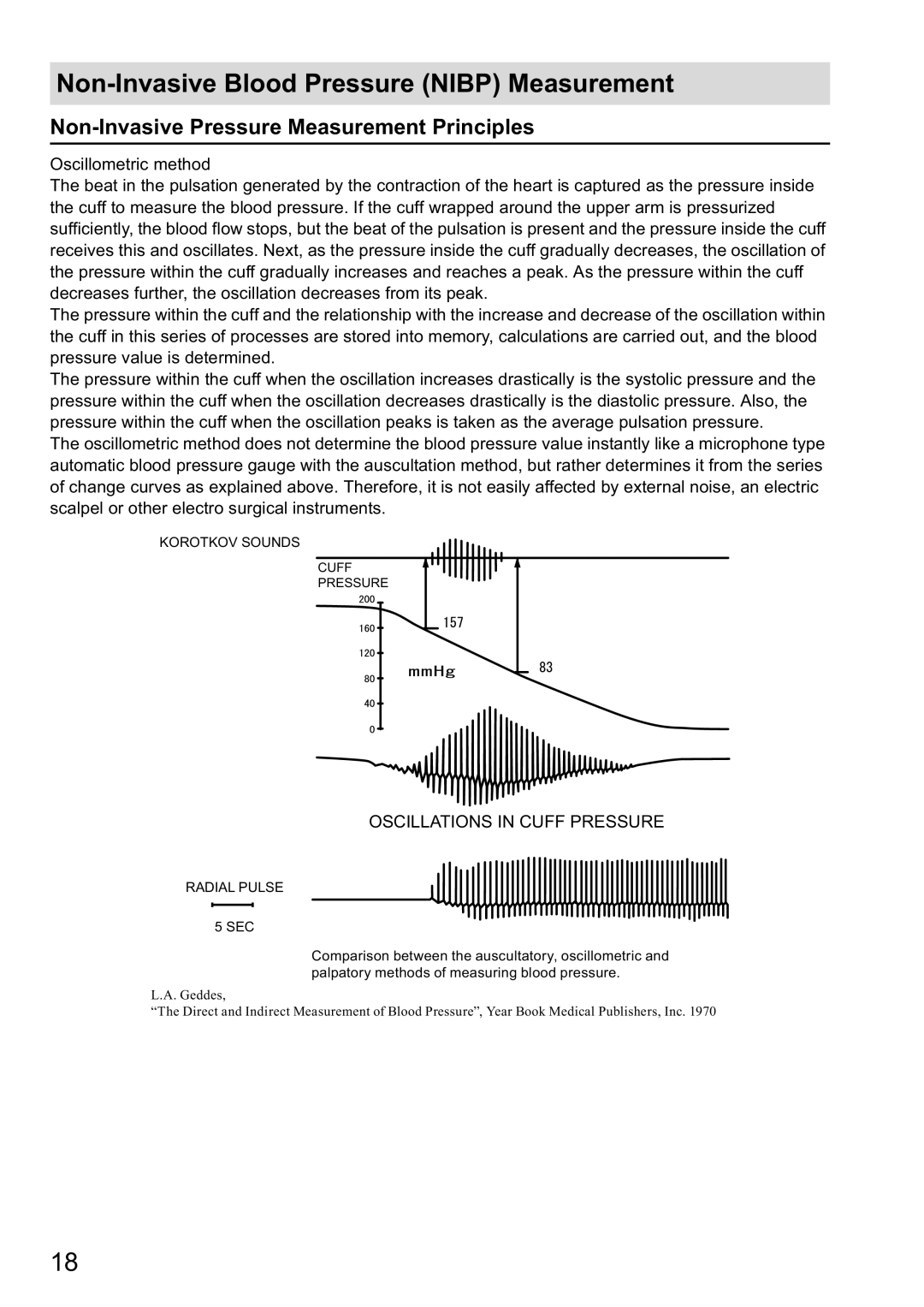
Non-Invasive Blood Pressure (NIBP) Measurement
Non-Invasive Pressure Measurement Principles
Oscillometric method
The beat in the pulsation generated by the contraction of the heart is captured as the pressure inside the cuff to measure the blood pressure. If the cuff wrapped around the upper arm is pressurized sufficiently, the blood flow stops, but the beat of the pulsation is present and the pressure inside the cuff receives this and oscillates. Next, as the pressure inside the cuff gradually decreases, the oscillation of the pressure within the cuff gradually increases and reaches a peak. As the pressure within the cuff decreases further, the oscillation decreases from its peak.
The pressure within the cuff and the relationship with the increase and decrease of the oscillation within the cuff in this series of processes are stored into memory, calculations are carried out, and the blood pressure value is determined.
The pressure within the cuff when the oscillation increases drastically is the systolic pressure and the pressure within the cuff when the oscillation decreases drastically is the diastolic pressure. Also, the pressure within the cuff when the oscillation peaks is taken as the average pulsation pressure.
The oscillometric method does not determine the blood pressure value instantly like a microphone type automatic blood pressure gauge with the auscultation method, but rather determines it from the series of change curves as explained above. Therefore, it is not easily affected by external noise, an electric scalpel or other electro surgical instruments.
KOROTKOV SOUNDS
CUFF
PRESSURE
OSCILLATIONS IN CUFF PRESSURE
RADIAL PULSE
5 SEC
Comparison between the auscultatory, oscillometric and palpatory methods of measuring blood pressure.
L.A. Geddes,
“The Direct and Indirect Measurement of Blood Pressure”, Year Book Medical Publishers, Inc. 1970
18
